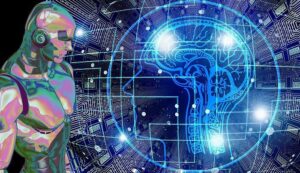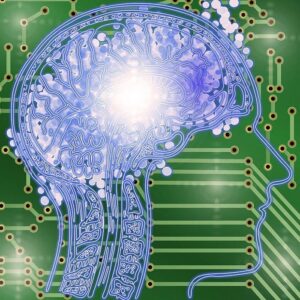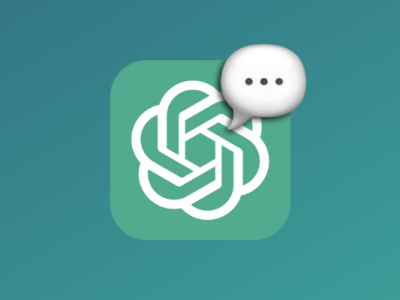Artificial intelligence (AI) and machine learning (ML) have been leading IT technologies on the market for several years now. However, 2020, more than all other years, proved that these technologies and digitalization are not just nice-to-have but a true necessity for business. Many companies are still adjusting to the reality brought by the pandemic and possible future economic crisis.
For ML and AI creators, it is an opportunity to prove the usefulness of these technologies and develop new solutions that can be used in the future. We have gathered a few AI and ML trends and solutions which peaked in 2020 and will be continued in 2021 and the following years:
AI-driven cloud innovation
Applications based on AI are at the same time driving cloud adoption and benefiting from the popularity of this solution. Like other virtual services, the use of AI in the cloud is cost-effective and efficient, resulting in its rising popularity.
It is very beneficial to store your data in the cloud with easy access to AI and ML. That is why major cloud-providing companies offer AI services within their environment as a service. Such access highly improves the organization of internal infrastructure and facilitates many operations in an API development company.
Due to COVID-19, AI gained popularity in industries that were not very favorable towards cloud services, mostly due to security reasons. With the outbreak of a pandemic, however, healthcare found it convenient to use AI in order to, for instance:
- Analyze and assess changes in infection rates
- Facilitate personnel utilization
- Improve the deployment of medical equipment.
Another industry in which AI cloud-based services turned out to be useful was finance. Cloud technology with AI capabilities was adopted to enable:
- Rapid financial planning
- More accurate budget forecasts
Since the epidemiological situation has not changed yet, this type of practical AI application will still be necessary for the coming months and companies can progress in this field when they hire DevOps developers in their team.
AI and ML as key players in hyper-automation
As you know from one of Addepto’s blog posts, hyper-automation is one of the currently emerging technological trends. It implies use of innovative technologies in production companies across the world for purposes such as: automating, designing, processing, measuring, managing workflows, and simplifying daily tasks.
The COVID-19 pandemic has also accelerated the view according to which AI and ML are at the same time key components and major drivers of hyper-automation. The year 2020 proved how important quick adaptation to changing requirements of business and market in business is. Adoption of AI models, algorithms, deep learning, and automated system’s data allows us to make continuous improvements inside a company and business model, according to the newest trends and needs of the customers.
The increased use of AI for (cyber)security
ML and AI have been widely used for security systems in home and corporate networks for some time already. Developers concerned with security issues are working on technological developments that will keep up with constantly evolving threats such as malware, DDS attacks, or ransomware. ML and AI are indispensable in identifying such threats, even in their earliest stages of development.
The AI-powered security tools can also gather data from the company’s transactional systems, communication networks, digital activity, website, and other sources. In stored information, they look for patterns and activities such as suspicious IP addresses or data breaches, which can harm the whole organization’s cybersecurity.
Home security systems, at least at the moment, are usually limited to systems integrated with voice assistants and image recognition. However, it is possible that AI will expand to create utterly new smart homes, in which technology will learn the daily habits and choices of inmates and, based on that knowledge, will be able to identify intruders and other threats.
Conversational AI
This technology is commonly deployed in applications and websites so that they can act and communicate more like humans. It is done through speech and text recognition, understanding of customer’s intents, knowledge of various languages, and responding like humans.
Two of the most popular examples of conversational AI are Amazon Echo and Google Homes. Despite the success of these two innovations, developers are still working on further improvements. The areas that undoubtedly still need to be upgraded for an excellent command over natural language processing (NLP) are automated text recognition and speech recognition. We can expect that both these spheres of conversational AI will continue to develop in the coming months.
Nowadays, conversational AI-based chatbots are used in businesses i.a. for:
- Scheduling meetings
- Cross-selling products
- Carrying out airline transactions
- Creating better consumer experience
Functional AI
In its earliest stages of development, AI was more about algorithms rather than ease of use. However, the latest AI-powered apps and solutions tend to focus on the usability of this technology. Since the majority of society does not have a technological background, it would be an ideal situation if users would not even be aware of using AI and could simply benefit from its functionalities.
Many businesses have already incorporated frictionless AI and ML into their platforms. It is evident in business intelligence applications, which provide users with insights without creating unnecessary friction. BI apps are now more and more often supposed to predict what the given user wants to accomplish and then automatically provide it. This kind of ease-of-use is extremely valuable for people that are not necessarily tech-savvy.
AI-supported platforms are beginning to guide users to reach better conclusions by working invisibly in the background. It is achieved by interrogating huge volumes of data, searching for trends, anomalies, and patterns, and presenting results in a proper business context. Facilitating the decision-making processes is undoubtedly incredibly useful for all users and will be developed even more in 2021 and beyond.
During the COVID-19 outbreak, data was collected, organized, and analyzed at scale and size it has never been done. During this period, AI tools were developed to draw conclusions and create critical responses in new areas and industries. According to IDC forecasts, by the end of 2023, spending on AI technologies will grow up to 97.9 billion USD. It is more than two times than the 2019 spending level. These numbers prove that artificial intelligence and machine learning will play a major role in transforming our lives and businesses.















Comments